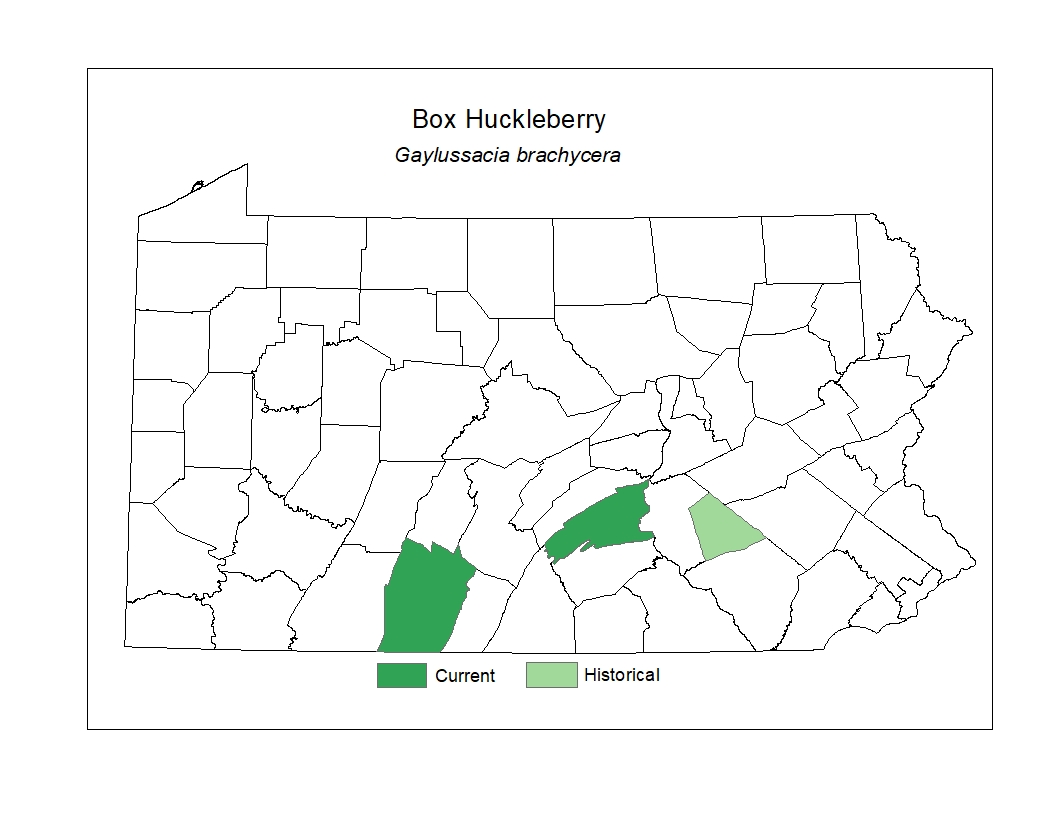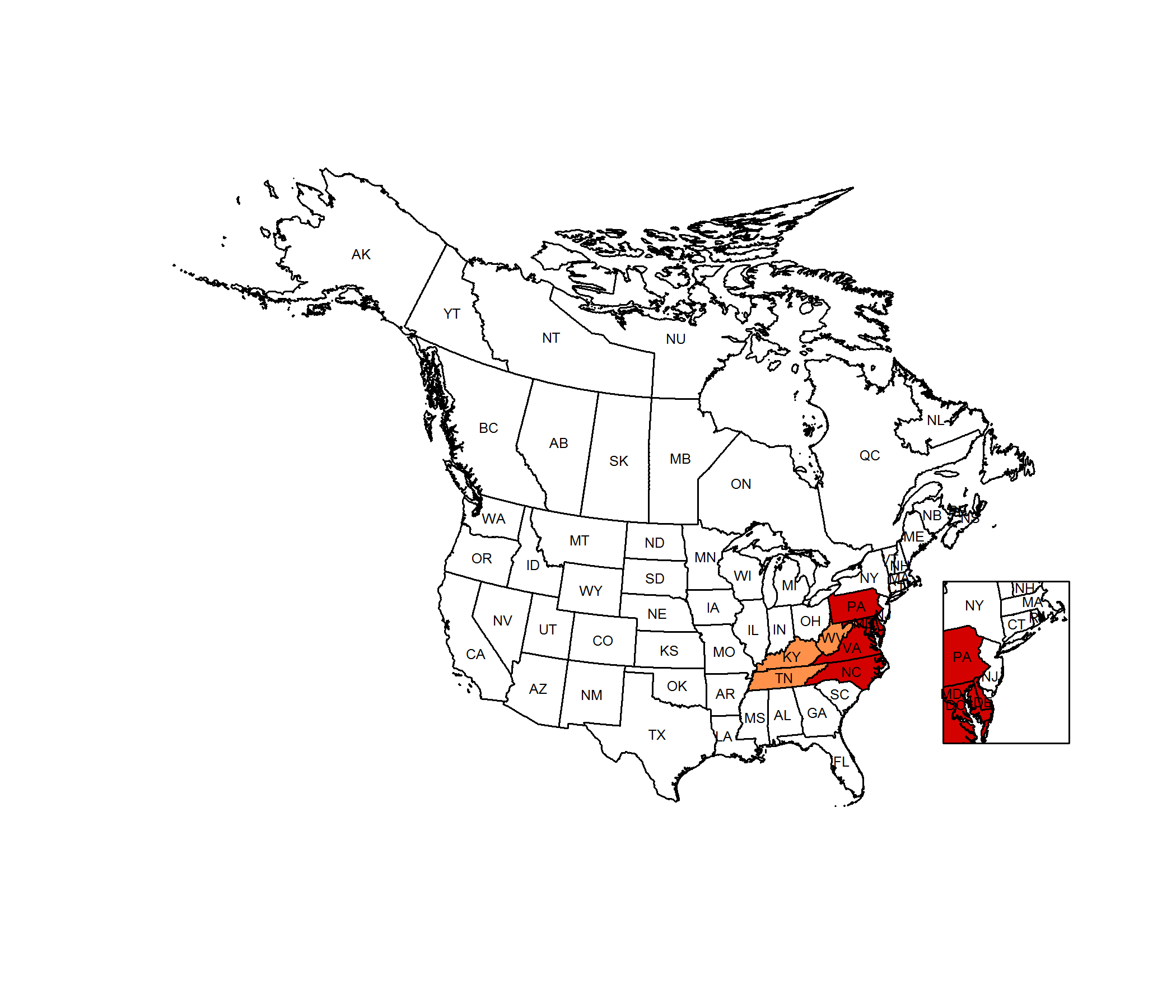 Species Factsheets
Species Factsheets
Gaylussacia brachycera
Box Huckleberry
State Status: Pennsylvania Endangered (PE)
PBS Status: Pennsylvania Endangered (PE)
Federal Status:
Global Rank: G3
![]() rank interpretation
rank interpretation
State Rank: S1
Did You Know?
This species is different than all others in the genus due to its lack of glands on its leaf surfaces.
Description
Box huckleberry (Gaylussacia brachycera) is a low shrub with branches that rise to about 30cm from underground, creeping stems, known as rhizomes. Its glossy, leathery leaves lack the resinous dots of other huckleberries, and it holds its leaves year-round while the others are deciduous. Its flowers, white or pinkish, are bell-shaped. Fruits are similar to blueberries, but have fewer, larger seeds.
Rank Justification
Critically imperiled in the nation or state because of extreme rarity (often 5 or fewer occurrences) or because of some factor(s) such as very steep declines making it especially vulnerable to extirpation from the state.
Habitat
Box huckleberry is typically found on north-facing slopes over acidic shale bedrock.
Survey Dates
Flowers May and early June; fruits August
Distribution

Threats
Only three populations of box huckleberry have been found in Pennsylvania. One large population is well protected in a state forest natural area, another has been damaged by road construction. The third has not been seen since 1930. Studies show that germination rate is very low and seedlings are so weak they are unable to grow. Box huckleberry populations are thought to be limited to asexual reproduction by spreading rhizomes.
Management
One box huckleberry population is protected within the Box Huckleberry State Forest Natural Area. In addition, the National Park Service has designated this area as a National Natural Landmark. State Forest rules and regulations prohibit the taking of any plant from state forest land. Wild Plant Management Permits are required prior to collecting Endangered and Threatened plant species for scientific purposes. Further roadwork is unlikely to cause more damage to the second population because the box huckleberry is listed as Threatened and, therefore, protected by regulatory agencies.
Conservation Status Map


NatureServe. 2017. NatureServe Explorer: An online encyclopedia of life [web application]. Version 7.1. NatureServe, Arlington, Virginia. Available https://explorer.natureserve.org.
https://arnoldia.arboretum.harvard.edu/pdf/articles/2011-68-3-little-big-plant-box-huckleberry-gaylussacia-brachycera.pdf
- NatureServe. 2018. NatureServe Explorer: An online encyclopedia of life [web application]. Version 7.1. NatureServe, Arlington, Virginia. Available at https://www.natureserve.org/explorer
- Pennsylvania Natural Heritage Program. 2018.
- Rhoads, A.F. and W.M. Klein, Jr. 1993. The Vascular Flora of Pennsylvania. American Philosophical Society, Philadelphia, Pennsylvania. Rhoads, A.F. and T.A. Block.
- 2007. The Plants of Pennsylvania: An Illustrated Manual. 2nd edition. University of Pennsylvania Press, Philadelphia, Pennsylvania.







